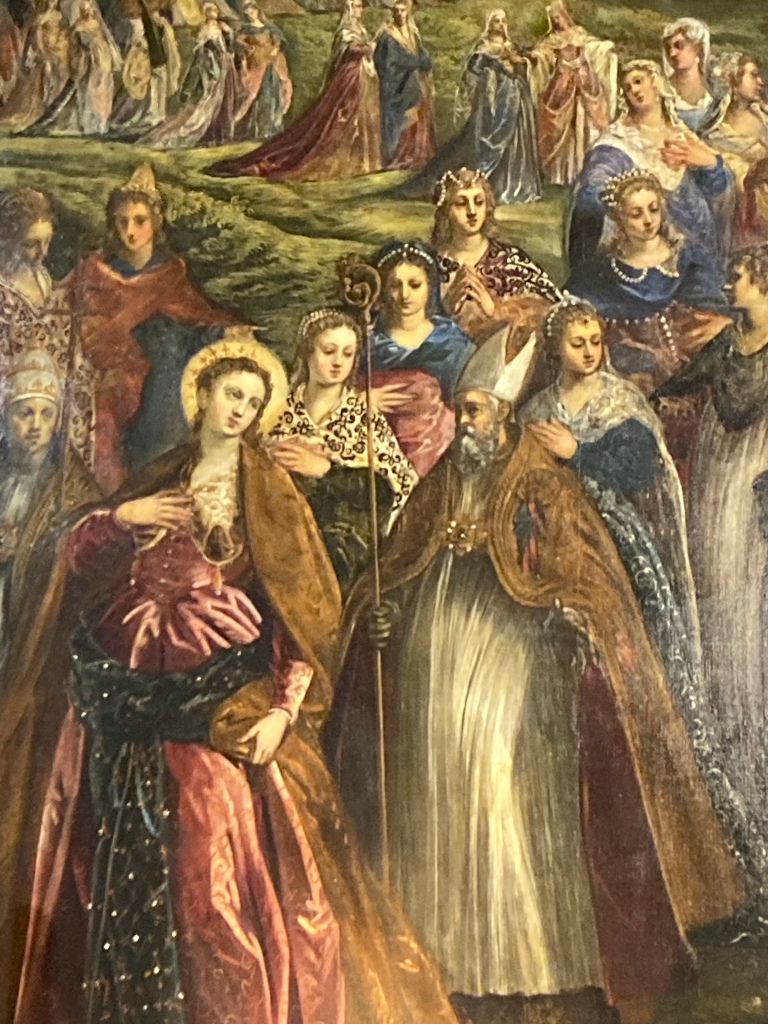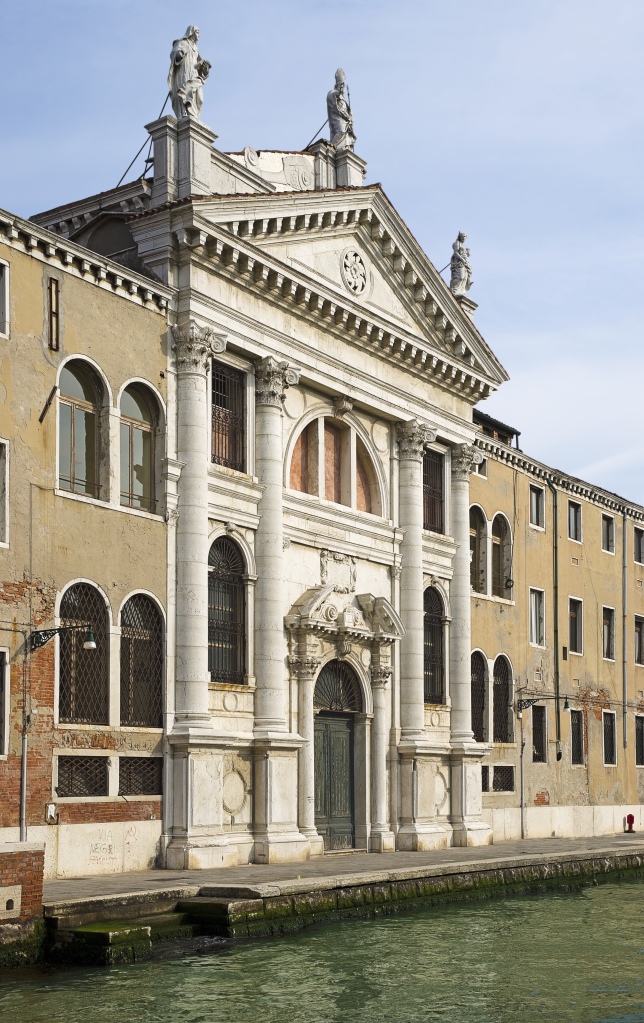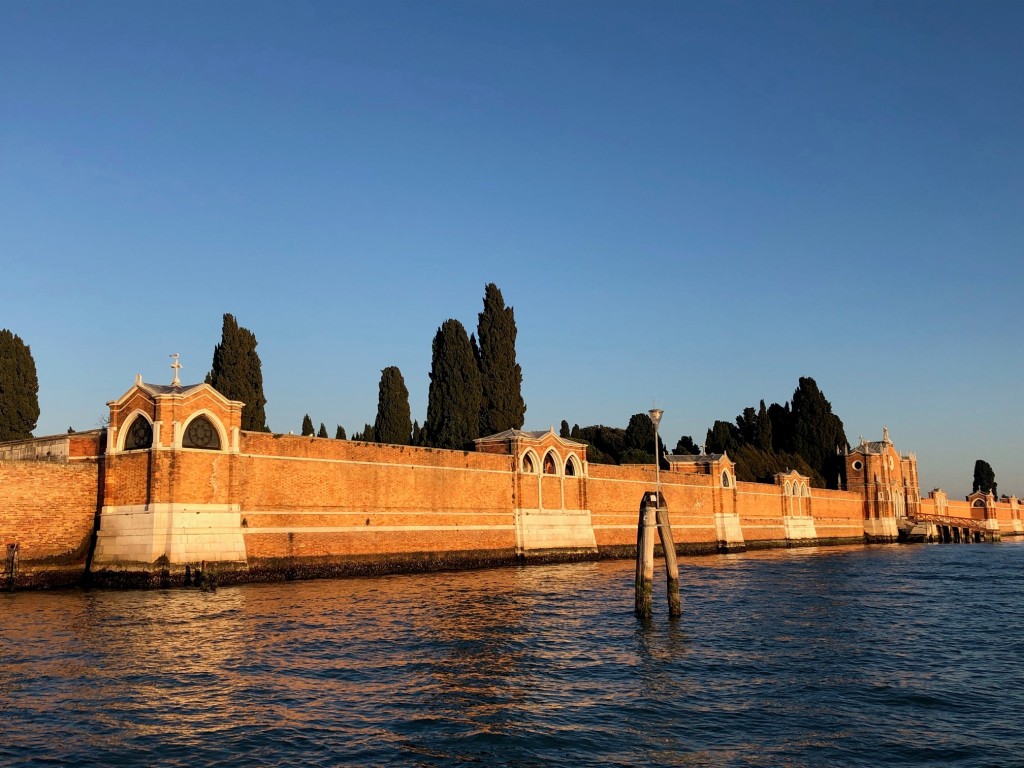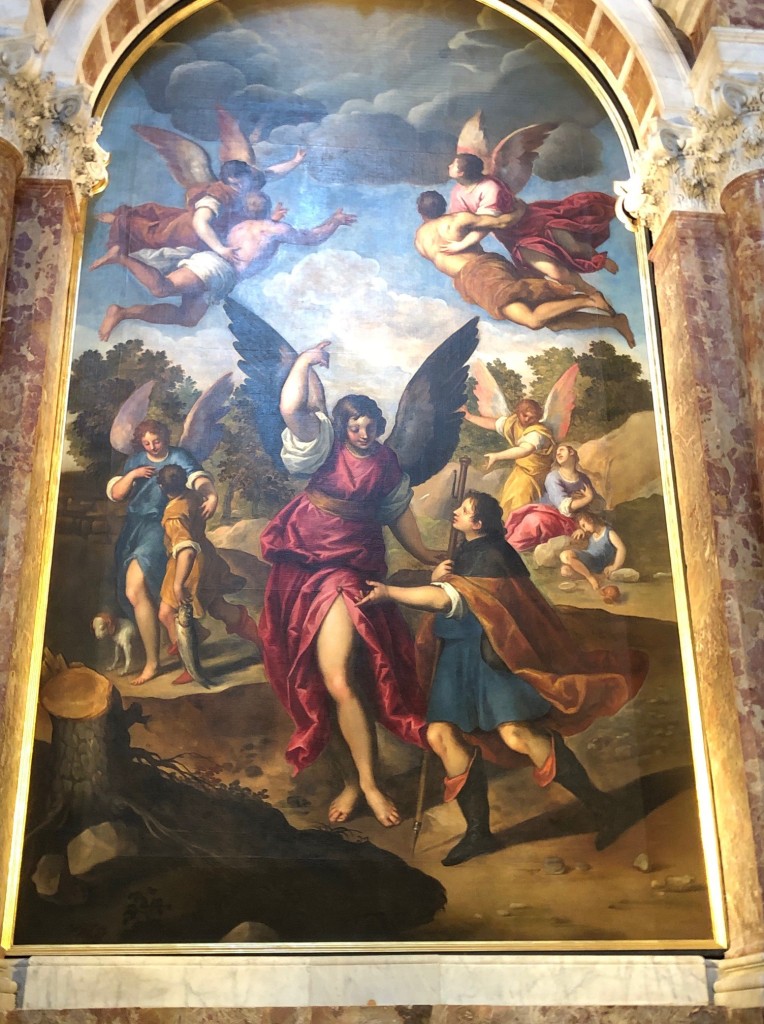The average Venetian citizen is born at the ‘Ospedale Civile’ which is the general hospital located adjacent to the Church of San Giovanni e Paolo in the Castello district of Venice. This large, modern hospital provides care for the lagoon population of Venice from the cradle to the grave. The hospital is conveniently located just a stone’s throw from the cemetery. So if things go terminally wrong, it’s just a hop, skip and a jump to your final resting place. What many people don’t know is that the ‘Ospedale’ has existed in its current location since the 13th century, originally as a hospital for lepers and later as a general hospital.
BEAUTY and ART – As this is Venice the entrance to the hospital is through the impossibly beautiful Scuola San Marco building. Scuola San Marco was one of the most important guilds of Venice, built in the early 16th century by Pietro Lombardo and Mauro Codussi. The outside of the building is richly decorated in white marble. Inside the building is elegant and polished with vast white pillars supporting the historic, timber ceiling. The floor is a geometric pattern of polished stones. It’s clean, smart and doesn’t smell like a hospital. The practical red carpet adds a film star dimension to the distinctly above average hospital visit.



Outside there’s a small canal, often lined with off duty ambulance boats and their drivers, huddled together, smoking a cigarette and chatting about the weather or football or Italy’s political situation! There’s also an outdoor pier, on the lagoon side of the hospital where ambulances come and go, lights flashing and sirens blaring. Meanwhile back inside the Scuola San Marco all is peace and tranquillity. Visitors can choose to go into the hospital or to go upstairs to the first floor to visit the museum. Here there’s a fantastic small exhibition about the history of medicine, including 18th century scalpels and all sorts of appalling looking instruments of torture. These include saws, hatchets and numerous nasty little knives, horrible sharp scratchy things and giant tweezer-like pincers. Just looking at them made me shudder and walk on quickly.

Nearby there was an incredible selection of historic books, complete with diagrams, documenting the development of medicine and the understanding of anatomy over the years. The first book to catch my eye was an early 18th century edition of William Harvey’s ‘De Motu Cordis’ a detailed description of the circulation of the blood around the body. These ideas were first published in 1628, when Harvey – a Londoner working at Padova University – suggested that blood was pumped around the human body, starting and finishing at the heart. He was quite right and he had effectively discovered the circulation of the blood. His teacher Hieronymous Fabricius had been teaching anatomy at Padova University for many years and had discovered the valves in the veins. Harvey’s work was originally published in Frankfurt, it was several decades later when it was translated into English. As a young guide I was taught that dissections took place regularly in Padova from the 16th century onwards, without the knowledge of church officials, who regarded any dismemberment of the human body as sacrilege. A rotating dissection table was used, so that body parts could be disposed of quickly and easily into the canal that ran directly below the ‘operating room’. Certainly the anatomical theatre in Padova is the oldest in the world and was used as a model for other similar dissection rooms in London, Amsterdam and Leiden.





VENICE HOSPITAL is scenically located on the edge of the lagoon, so patients might have a view from their hospital bed of the bell towers of Murano, Burano or (on a clear day) Torcello. Any Italian will tell you that their health care system is excellent. Medical staff take a ‘holistic’ approach to patient care and carefully consider all aspects of the person’s general health and wellness. Consequently Italy has a very large elderly population with an average life expectancy of about 83 years. Nowadays the hospital has a super modern helipad on the roof, so patients in need of urgent care can be transported from all corners of the lagoon in just a few minutes, to the hospital. Health care is taken incredibly seriously in Italy. Even now it’s possible for a family doctor to prescribe respiratory treatments and physiotherapy at private spa resorts, and the bill is paid for (at least in part) by the Italian government.
Part of the Venice Ospedale complex is the Church of San Lazzaro dei Mendicanti. It is separated from the main hospital entrance by a rather beautiful cloister. The church itself contains two beautiful paintings. Firstly a canvas by Tintoretto – portraying Saint Ursula and her entourage of 11,000 virgins…Secondly an emotional and atmospheric Crucifixion by Veronese. There’s also a slightly surreal sculptural frieze above the entrance memorialising the Venetian Admiral Mocenigo and his many military victories on land and sea (including the naval battle of Candia). Mocenigo actually lost his life defending modern day Crete (Candia) from the Turks.






Chiesa di San Lazzaro dei Mendicanti, Venezia. Tintoretto and Veronese paintings inside
A very helpful volunteer in the hospital church explained to me that the Venice Ospedale complex dates back to the 16th century. It was always a hospital and not part of a monastery or convent. Instead it was a civic institution designed to cure people and with the altruistic aim of ‘bettering’ the patients. The hospital was used to improve the health of all Venetians and to ensure that they became productive members of society. For example a beggar suffering from malnutrition would be taken into the hospital given food and water, clean clothes and regular nutrition. When the individual was stronger they would be put to work and trained in a particular skill, gardening, joinery, cooking, many were employed within the hospital complex.
THE PEARLY GATES – sometimes when all else fails or the end of the road is reached, it’s reassuring to know that the hospital is conveniently located next to the island of San Michele, the cemetery island. In the event of a patient’s demise, there isn’t too far to go. In fact the stone masons are all located by the hospital too. So a choice of grave stones and commemorative plaques for the ‘loved one’ are easily on hand. Once a year at the time of All Souls Day, 2nd November, a floating bridge is built from Fondamente Nove across the lagoon to San Michele to enable Venetians to visit their loved one’s final resting place on foot. The Cemetery island of San Michele came into use in the 1830s when it was decided that it was unhealthy to have ‘dearly departed ones’ buried in churches in the heart of Venice, especially when space was so limited. Napoleon decreed that a separate burial place should be established, divided into areas for Catholics, Orthodox (usually Greek Orthodox) and Evangelists (typically Protestants, Church of England, Lutherans etc). The American poet Ezra Pound is buried here. So too is Stravinsky, the composer and the British diplomat Ashley Clarke, who founded ‘Venice in Peril’ in 1971. Clarke recognised the need to protect and preserve Venice as a unique artistic city in the 1960s. In Italian All Souls Day is rather prosaically known as the ‘Commemorazione dei Defunti’ in other words ‘Remembering the Deceased’. Personally I prefer ‘All Souls’ or even the ‘defunct’, it makes me smile in a dark sort of way.



View of San Michele (Cemetery island of Venice) and tomb of Ezra Pound
CHURCH and religion are never far away in Venice. There are about 130 churches in the city. The Church of the Gesuiti just round the corner from the hospital has a wonderful painting by Palma di Giovane dating from about 1619. The painting is a highly coloured oil on canvas, depicting a guardian angel and other angels transporting mortal souls to the heavens. Tobias and the Angel can be seen on the left, Tobias is carrying a fish, for the full story: ‘Tobias and the Angel’ but sadly I digress….
Church, religion, hospitals and cemeteries. This perfectly sums up the cycle of life in Venice, from birth to adulthood to death, there’s always an angel waiting to welcome a new baby into the world and another angel waiting patiently to escort the righteous into the kingdom of heaven. Now let’s just hope we’ve all been sufficiently well-behaved to be heading in the right direction.

Notes:
- William Harvey (1578-1657) was an English doctor who trained in Padova from 1593-1599. He returned to London and became a Physician at St Bartholomew’s Hospital, London in 1609 – he was Doctor to King James I and then to Charles I in 1625.
- For context Shakespeare lived from 1564-1616 – it is possible that he may have met William Harvey.
- Padova (Padua) is the second oldest university in Italy. It has the earliest ‘anatomical theatre’ in Europe. Dissection of bodies took place in this specially designed ‘theatre’ from 15th century.
- For more on Saints and Angels in Venice…
- For more on ‘Tobias and the Angel’ by Titian
Links:
- The Jewish Cemetery in Ferrara, an hour south of Venice has always fascinated me: Ferrara and Giorgio Bassani
- Venice and the Venetians are no strangers to mortality. The city regularly suffered from outbreaks of plague. You may find this article about the Redentore Church interesting: Venice and The Redentore
- Every November Venice celebrates the Festa della Salute – again this commemorates survival from the plague: Venice – Health, Quarantine and Santa Maria della Salute
- Continuing the theme you might like: Death in Venice a short article about Visconti’s atmospheric film, shot in Venice and on Lido di Venezia starring Dirk Bogarde.
- www.greyhoundtrainers.com is a personal blog, I write extensively about Italy, The Alps, British Isles, History, Art, Food and Wine. Please explore the site and don’t hesitate to ask questions or continue a discussion.
- I run a very specialist luxury travel business for a living. I create truly unique journeys for a range of clients; small groups, individuals, families, couples. My main focus is Italy. You can visit my web site for inspiration: www.grand-tourist.com


- Written: 28th August, 2020
- Updated: 16th Sept, 2023
- #grandtourist #educatedtraveller

Wonderful article! I now have a new entry on my ‘must-see’ in Venice list.
Grazie! Sandy Rowzie
LikeLiked by 1 person